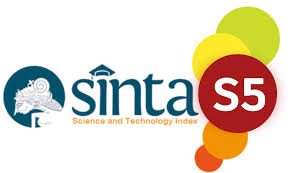Identifying the Use Mother Tongue in EFL Classroom: An Observational Study
DOI:
https://doi.org/10.37253/iallteach.v4i2.6845Keywords:
Mother tongue, EFL classroom, Observational studyAbstract
This study investigates how instructors use their mother tongue in an EFL classroom, which identifies how the instructor uses the mother tongue in the EFL class, regarding its frequency and function. Observational study methods are used in this study. In this study, the researcher observed an instructor in a foreign language class at a junior high school in Yogyakarta. Furthermore, an observation form framework is used to stay focused and the information captured is specific. This study uses an observational framework developed by Paker & Karaağaç (2015). Based on research findings that the use of mother tongue in foreign language classes uses 6 language functions. Of the 6 language functions, the use of the mother tongue is very often used with different purposes but still the mother tongue has a role as a liaison for the target language in order to achieve learning objectives in the classroom.
Downloads
References
Birks, M., Chapman, Y., & Francis, K. (2008). Memoing in qualitative research: Probing data and processes. Journal of Research in Nursing, 13(1), 68–75. https://doi.org/10.1177/1744987107081254
Boon, D. (2011). Adult literacy teaching and learning in multilingual Timor-Leste. Compare, 41(2), 261–276. https://doi.org/10.1080/03057925.2011.547287
Canagarajah, S. (2011). Translanguaging in the classroom: Emerging issues for research and pedagogy. Applied Linguistics Review, 2(2011), 1–28. https://doi.org/10.1515/9783110239331.1
Cochran, W. G., & Chambers, S. P. (1965). The Planning of Observational Studies of Human Populations. Journal of the Royal Statistical Society. Series A (General), 128(2), 234. https://doi.org/10.2307/2344179
Dharma, S. (2019). International Journal of Indonesian Education and Teaching. International Journal of Indonesian Education and Teaching, 3(1), 128–136.
Dr.farida Nugrahani, M. H. (2014). dalam Penelitian Pendidikan Bahasa. 信阳师范å¦é™¢, 1(1),38–42. http://e-journal.usd.ac.id/index.php/LLT%0Ahttp://jurnal.untan.ac.id/index.php/jpdpb/article/viewFile/11345/10753%0Ahttp://dx.doi.org/10.1016/j.sbspro.2015.04.758%0Awww.iosrjournals.org
Eisa, A. (2007). The Use of Mother Tongue in Group Work. 1(June), 49–72. http://marifa.hct.ac.ae/2007/735
Faridy, F., & Syaodih, E. (2017). Analysis on the Importance of Mother Tongue in Early Childhood. 58(2013), 193–196. https://doi.org/10.2991/icece-16.2017.33
Fitriani, N., & Zulkarnain, S. I. (2019). An Investigation of Mother Tongue Influence on EFL Learners during their Speaking Performance. SALTeL Journal (Southeast Asia Language Teaching and Learning), 2(2), 30–35. https://doi.org/10.35307/saltel.v2i2.29
Gay, L.R., Mills, G.E., & Airasian, P. (2009). Educational research: Competencies for analysis and applications (9thed.). New Jersey: Pearson.
Holmes, J., 2013. Introduction to Sociolinguistics, An. 4th ed. Milton: Taylor & Francis.
Jenkins, J. (2015). Repositioning English and multilingualism in English as a Lingua Franca. Englishes in Practice, 2(3), 49–85. https://doi.org/10.1515/eip-2015-0003
Jones, S., & Mutumba, S. (2019). Intersections of Mother Tongue-Based Instruction, Funds of Knowledge, Identity, and Social Capital in an Ugandan Pre-School Classroom. Journal of Language, Identity and Education, 18(4), 207–221. https://doi.org/10.1080/15348458.2019.1607349
Maharani, A. A. P., & Widhiasih, L. K. S. (2016). Respon siswa terhadap umpan balik guru saat pelajaran bahasa inggris di sd saraswati 5 denpasar. Jurnal Bakti Saraswati (JBS), 5(2).
Ma, L. P. F. (2019). Examining the functions of L1 use through teacher and student interactions in an adult migrant English classroom. International Journal of Bilingual Education and Bilingualism, 22(4), 386–401. https://doi.org/10.1080/13670050.2016.1257562
Nelson, Y. K. and C. L. (2006). World English In Asian Contexts (book) (Issue c).
Nuraida, I. (2019). The Influence of the Use the First Language in Indonesian Efl Classrooms. Journal of English Language Teaching and Literature (JELTL), 2(1), 23–30. https://doi.org/10.47080/jeltl.v2i1.540
Paker, T., & Karaağaç, Ö. (2015). The Use and Functions of Mother Tongue in EFL Classes. Procedia - Social and Behavioral Sciences, 199, 111–119. https://doi.org/10.1016/j.sbspro.2015.07.494
Pardede, P. (2018). Use of Mother Tongue in EFL Classes of Secondary Schools In Jabodebek: Students’ and Teachers’ Perception. JET (Journal of English Teaching), 4(2), 62. https://doi.org/10.33541/jet.v4i2.831
Pavón Vázquez, V., & Ramos Ordóñez, M. del C. (2019). Describing the use of the L1 in CLIL: an analysis of L1 communication strategies in classroom interaction. International Journal of Bilingual Education and Bilingualism, 22(1), 35–48. https://doi.org/10.1080/13670050.2018.1511681
Perfecto, M. R. G. (2020). English language teaching and bridging in mother tongue-based multilingual education. International Journal of Multilingualism, 0(0), 1–17. https://doi.org/10.1080/14790718.2020.1716771
Pratiwi, W. R. (2018). Interactional language use in EFL classroom : Exploring the phenomena of mother tongue in Indonesia. Interactional Language Use in EFL Classroom : Exploring the Phenomena of Mother Tongue in Indonesia, 65(1), 245–249.
Sabriani, S. (2012). Penerapan Pemberian Tugas Terstruktur disertai Umpan Balik pada Pembelajaran Langsung untuk Meningkatkan Motivasi dan Hasil Belajar Siswa (Studi Pada Materi Pokok Struktur Atom Kelas X6 SMA Negeri 3 Watampone). Chemica: Jurnal Ilmiah Kimia dan Pendidikan Kimia, 13(2), 39-46.
Saddhono, K., & Rohmadi, M. (2014). A sociolinguistics study on the use of the Javanese language in the learning process in primary schools in Surakarta, Central Java, Indonesia. International Education Studies, 7(6), 25–30. https://doi.org/10.5539/ies.v7n6p25
Said, M. (2017). Effective Behavior of EFL Teachers as Perceived by Undergraduate Students in Indonesia. English Language Teaching, 10(10), 50. https://doi.org/10.5539/elt.v10n10p50
Salehi, M. R., Abiri, E., Hosseini, S. E., & Dorostkar, B. (2013). Design of tunneling field-effect transistor (TFET) with Al xGa1xAS/InxGa1xAs hetero-junction. 2013 21st Iranian Conference on Electrical Engineering, ICEE 2013, 22, 63–75. https://doi.org/10.1109/IranianCEE.2013.6599777
Seid, Y. (2019). The impact of learning first in mother tongue: evidence from a natural experiment in Ethiopia. Applied Economics, 51(6), 577–593. https://doi.org/10.1080/00036846.2018.1497852
Shcrrmo, B. K. (n.d.). MotherTongue Use in English Classroom. 80–87.
Sulistiyo, U. (2016). English language teaching and efl teacher competence in indonesia. Igniting a Brighter Future of Efl Teaching and Learning in Multilingual Societies, 4(2), 396–406. http://ejournal.unp.ac.id/index.php/selt/article/view/7001/5535
Syatriana, E., Akib, E., & Sulawesi, S. (2020). THE POTENTIAL OF LOCAL LANGUAGE AND LANGUAGE ACQUISITION : A CASE STUDY OF. 7(13), 2439–2444.
Bawono, K.O., & Rini, J.E., (2010). The Use of Mother Tongue in General English Program for Teenagers in the Second and Fourth Levels. (2001), 46–53.
Timuçin, M., & BAYTAR, İ. (2015). The Functions of the Use of L1 : Insights From an Efl Classroom. Kastamonu Eğitim Dergisi, 23(1), 241–252.
Vattøy, K. D., & Gamlem, S. M. (2020). Teacher–student interactions and feedback in English as a foreign language classrooms. Cambridge Journal of Education, 50(3), 371–389. https://doi.org/10.1080/0305764X.2019.1707512




.png)






